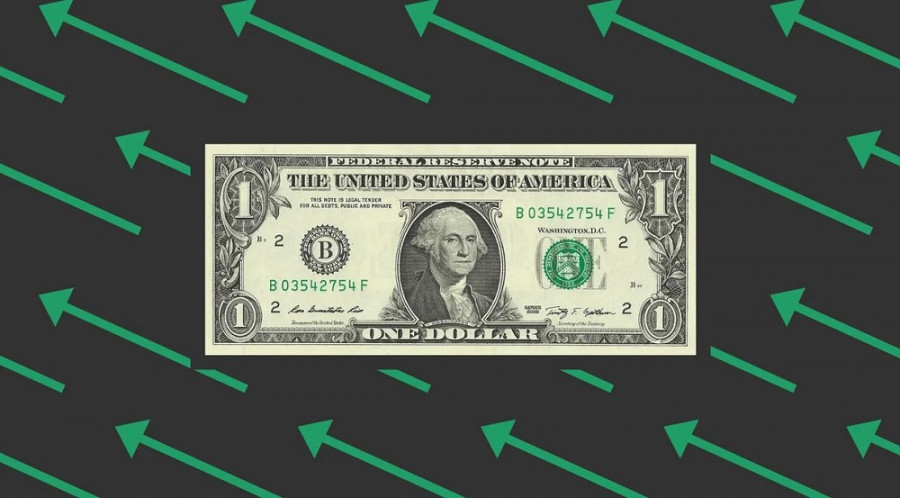The EUR/USD pair continues to move along a wave-like trajectory, accurately working through levels. The working range is 1.0900-1.0980. Last week, traders tried to break out of this range, but to no avail. Both bulls and bears faced setbacks. The bulls tried to conquer the 10-figure mark, while the bears tried to settle within the 8-figure range. However, the contradictory fundamental background prevented opposing sides from achieving their goals. The pair stayed within the 9-figure range.
Traders aren't as motivated this week. While buyers and sellers are taking turns in seizing the initiative, the pair is still hesitant to show some distinct movements. The post-holiday market lethargy is fully evident.

However, there are positive aspects to all of this. The price trajectory is predictable, especially this week. Such predictability is enticing, as the pair alternately bounces off the boundaries of the price range. The pendulum swings with the same magnitude for the second week in a row, providing both buying and selling opportunities. Rare news of secondary importance and the general market sentiment (fluctuating interest in risk) push the price up and down, but generally, the pair is stuck in place. This is clearly visible on the weekly EUR/USD chart.
This dynamic is driven by uncertainty. Investors are no longer confident that the Federal Reserve will start monetary easing in March. The probability of such a scenario is estimated at 60%, whereas just two weeks ago, markets were pricing in a 75% probability. If US inflation accelerates in December, the market will further doubt whether the Fed will take the first step towards lowering rates in early spring.
The key macroeconomic report will be published on Thursday. The US will release the December Consumer Price Index (CPI). According to forecasts, the CPI will demonstrate an upward trend: in monthly terms, it is expected to reach 0.2% (up from 0.1% in November), and on an annual basis, it is expected to reach 3.2% (up from 3.1% in November). On the other hand, the core CPI, excluding energy and food prices, is expected to decline - reaching 0.2% on a monthly basis. In annual terms, the core CPI is expected to dip below the 4% mark for the first time since May 2021, reaching the target of 3.8%.
It can be assumed that the dollar will show a stronger reaction to inflation rising than to slowing down. The market clearly rushed to conclusions, assuming the first rate cut would happen at the March meeting. Therefore, any arguments against this decision will provide significant support for the US currency. An increase in the CPI is an unequivocal argument against monetary easing. In this case, the Fed could adopt a more hawkish stance by keeping the interest rate at the current level, at least until the end of the first half of the year. This means that the first rate cut may not happen in March but in July (assuming, of course, that the Fed is confident by then that inflation will return to the 2% target in a timely manner).
In this context, the significance of the December CPI cannot be overstated. I would like to remind you that the report will be published at the start of the US trading session on Thursday.
The euro faced underlying pressure from the European Central Bank on Wednesday. ECB Vice President Luis de Guindos expressed concern about the technical recession and weak economic prospects, stating that "economic indicators reflect negative dynamics in the eurozone." However, he also took note of the process of inflation returning to 2%, as expected, "will temporarily pause." It's worth noting that, according to the latest data, overall inflation in the eurozone accelerated in December. Inflation figures in Germany and France also showed an upward trend. Therefore, Guindos' rhetoric in this context confirms that the ECB will keep interest rates at the current level at least throughout the first half of this year.
As we can see, the fundamental background does not support a decisive breakthrough either downward or upward. The pair reacts reflexively to the information flow but remains within the 9th figure, awaiting the key macroeconomic report of the week.
In my opinion, under these conditions, it is advisable to adopt a wait-and-see position. The spring has been compressed for too long, and it will finally "unwind" on Thursday. Whether it will move toward the 10th figure or the 8th figure is an open question. However, there is no doubt that the December CPI will trigger significant volatility across all dollar pairs, and the EUR/USD pair will not be an exception.
The material has been provided by InstaForex Company - www.instaforex.comfrom Forex analysis review https://ift.tt/fQ6DmOu
via IFTTT
